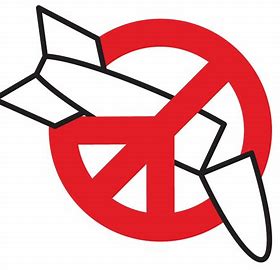 AUGUST 6 AND 9 2021 are the 76th anniversaries of the atomic bombings of Hiroshima and Nagasaki, and the first anniversary since the entry into force of the global nuclear weapons ban.
AUGUST 6 AND 9 2021 are the 76th anniversaries of the atomic bombings of Hiroshima and Nagasaki, and the first anniversary since the entry into force of the global nuclear weapons ban.
In Hiroshima and Nagasaki and around the world, there will be commemorations to mark the anniversaries and to call for action.
Survivors of the bombings, known as hibakusha, have been leaders in the movement for nuclear abolition and in advocating for the nuclear weapons ban treaty.The Hibakusha Appeal, with over 10 million signatures, calls for all countries to join the Treaty on the Prohibition of Nuclear Weapons (TPNW). There is widespread public support for Japan to join the nuclear weapons ban, including from the mayors of Hiroshima and Nagasaki.
Setsuko Thurlow, survivor of the Hiroshima atomic bombing and activist says: “Seventy-six years ago, I survived the atomic bombing of Hiroshima, unlike the hundreds of thousands of people who were indiscriminately massacred in August 1945.
“At that time, like many survivors, I made a vow that their deaths would not be in vain. I vowed that I would work until my last breath, to warn the world about the danger of nuclear weapons, to make sure that no one else suffers as we have suffered. Let us honour the people who perished with our actions. The Treaty on the Prohibition of Nuclear Weapons has entered into force. Nuclear weapons have always been immoral. Now they are also illegal. Nuclear abolitionists everywhere can be incredibly encouraged and empowered by this new legal status. And now, with greater intensity and purpose, we will push forward to our ultimate goal – a world without nuclear weapons.”
Beatrice Fihn, Executive Director of the International Campaign to Abolish Nuclear Weapons says: “As we commemorate the 76th anniversary of the bombings of Hiroshima and Nagasaki, the first treaty banning nuclear weapons has taken full effect. All countries must heed the calls of the hibakusha and join this treaty.”
Background
By the end of 1945, the bombings had killed an estimated 140,000 people in Hiroshima, and a further 74,000 in Nagasaki. In the years that followed, many of the survivors would face cancer or other terrible side effects from the radiation. The uranium bomb detonated over Hiroshima on 6 August 1945 had an explosive yield equal to 15,000 tonnes of TNT. It razed and burnt around 70 per cent of all buildings and caused an estimated 140,000 deaths by the end of 1945, along with increased rates of cancer and chronic disease among the survivors.
A slightly larger plutonium bomb exploded over Nagasaki three days later, levelling 6.7 sq km of the city and killing 74,000 people by the end of 1945. Ground temperatures reached 4,000°C.
In Hiroshima, 90 per cent of physicians and nurses were killed or injured; 42 of 45 hospitals were rendered non-functional; and 70 per cent of victims had combined injuries including, in most cases, severe burns.
The hibakusha are integral to the history of the atomic bombings of these cities – not only because they are among the few true nuclear weapons experts to have experienced the actual impact of these weapons – but also because of the tireless efforts of many hibakusha to eliminate nuclear weapons.
* Information on commemorative events, including online events here.
* More information on The UN Treaty On the Prohibition of Nuclear Weapons here.
* Source: The International Campaign to Abolish Nuclear Weapons – a coalition of non-government organisations in over one hundred countries promoting adherence to the UN Treaty on the Prohibition of Nuclear Weapons.